Germany "From Berlin to Frankfurt" 2023 (Saale Unstrut, Sachsen, Franken, Württemberg) by ombiasy WineTours took place from Monday, June 19, 2023 to Thursday, June 29, 2023.
This is the summary posting of the tour. I also did more detailed postings for each of the events. See the list of the 31 postings at the bottom of this summary posting.
Annette Schiller in her announcement: Discover Germany’s wine regions east of Frankfurt and Germany’s intellectual and cultural heart in “Mitteldeutschland”. We will spend 11 days touring four wine regions: the Saale-Unstrut, Sachsen, Württemberg, and Franken regions. Enjoy Berlin, Germany’s hip and fascinating capital.
Discover the phenomenal red wines of Germany, in particular Lemberger and Pinot Noir, which are gaining more and more international recognition, as well as Württemberg’s great Rieslings, so different from the Rheingau and Mosel Rieslings.
Discover Franken’s signature grape, Silvaner. Meet several of the many creative winemakers in the Saale-Unstrut and Sachsen regions, the wine regions in the former GDR, who produce fabulous cool climate wines that are imported to the US, where they find an enthusiastic audience.
Delve deep into Germany’s history and learn about the transition from a divided Germany to a unified country. Attend performances at world-renowned concert and opera houses - the Gewandhaus in Leipzig, the Semper Opera in Dresden - and enjoy the Mozart Festival in Würzburg.
Berlin • Saale-Unstrut • Sachsen • Franken • Württemberg
Hildebrand Organ, Naumburg • Gewandhaus Orchester, Leipzig
Semperoper, Dresden • Mozart Festival, Würzburg
From Berlin to Frankfurt, Monday, June 19, 2018 – Thursday, June 29, 2023
Accommodation: 10 nights
Night 1: Monday, June 19
► Titanic Hotel in Berlin, a 4-star hotel in Berlin on Gendarmenmarkt, Berlin’s most prestigious
central district, close to the main artery: the Unter den Linden Boulevard, the Museum Island, the
Berlin Opera, the government offices, and the Brandenburg Gate.
Nights 2 + 3: Tuesday, June 20 + Wednesday, June 21
► Hotel Zufriedenheit in Naumburg, a brand new 4-star, very elegant boutique hotel in a beautiful
Baroque town house in the center of historic Naumburg, in walking distance to the famous
cathedral.
Night 4: Thursday, June 22
► Hotel INNSIDE in Leipzig, a 4-star ultra-modern hotel in a beautifully restored late 19th century
building just next to J.B. Bach’s famous Sankt Thomas Church and the historic city center.
Night 5: Friday, June 23
► Welcome Parkhotel in Meissen, a beautiful 4-star hotel built in 1870 in the art nouveau style with
stunning views across the Elbe River to the Meissen Cathedral and the Albrechtsburg.
Night 6: Saturday, June 24
► Hotel INNSIDE in Dresden, an ultra-modern 4-star hotel with innovative design right in the
historic city center of Dresden with the Twist Sky Bar on the 6th floor that allows for great views of
the dome of the recently rebuilt Frauenkirche.
Nights 7 + 8: Sunday, June 25 + Monday, June 26
► Hotel Greifensteiner Hof in Würzburg, a 4-star hotel with old-world style elegance in the historic
center of the beautiful Baroque city of Würzburg.
Night 9: Tuesday, June 27
► Hotel Lamm Hebsack in Remshalden, a family-run hotel with a long tradition of hospitality and a
warm welcome. The hotel in the small village of Remshalden is beautifully located between
vineyards and orchards.
Night 10: Tuesday, June 28
► Hotel zum Alten Rentamt in Schwaigern, a family-run, historic hotel, part of the Count von
Neipperg Estate, with an elegant, refined interior and cultivated hospitality.
ITINERARY
DAY 00: Sunday, June 18
Annette
and I arrived a day early (by train from Frankfurt).
We had lunch at the Gendarmenmarkt in Berlin-Mitte.
DAY 01: Monday, June 19
09.45 am We meet in the lobby of the Titanic Hotel in Berlin-Mitte.
Titanic Hotel in Berlin is a 4-star hotel in Berlin on Gendarmenmarkt, Berlin’s most prestigious
central district, close to the main artery: the Unter den Linden Boulevard, the Museum Island, the
Berlin Opera, the government offices, and the Brandenburg Gate.
10.00 am Guided private city tour in Berlin.
The “Berlinflüsterer - Berlin whisperer” Arvid Zemkus gave us a thorough insider tour of Berlin. Learn about Berlin - Germany’s largest city, its historic and new capital, a divided city for 45 years and toady a vibrant, hip, artsy, spontaneous, lively city along the Spree River that is a food-lovers paradise.
12.30 pm Lunch at Mama Trattoria
This Italian eatery is right next to the Brandenburg Gate at the Pariser Platz next to the American Embassy, the French Embassy, and the famous Hotel Adlon.
Time to walk around Berlin’s most famous city square.
02.45 pm Guided private city tour in Potsdam: Sanssouci, Cecilienhof, etc.
Potsdam - a 1000 year old city - is now the capital city of the state of Brandenburg and famous for its palaces, gardens, and cultural and historic significance. In former times it was the residence city of the Prussian Kings and later of the German Emperor.
We all know about Frederick the Great, arguable the most important and beloved King of Prussia. To escape the formal ceremonies and pomp of the Berlin court he built a summer palace “Sanssouci” - basically more like a large, single-story villa than a palace - in Potsdam, outside of Berlin. Frederick the Great was very modern in his thinking and embodied the ideas of the “Age of Enlightenment”. He built beautiful gardens and a vineyard “Königlicher Klausberg” on the slopes of the hill Sanssouci sits on. There was varied success in harvesting good grapes and after 1945 most of the buildings and gardens were destroyed by the Russian Army.
After reunification in 1989, besides restoring historical buildings in Potsdam, the focus also shifted to the gardens and the vineyard. In his will Frederick the Great wrote that he wanted to be buried in the vineyard of Sanssouci, but through twists and turns of history his final resting place was in Hohenzollern Castle in Württemberg.
On August 17, 1991 (the fall of the Berlin wall in 1989 made it possible) on the 250th anniversary of his death, Frederick's casket lay in state in the court of honor at Sanssouci, covered by a Prussian flag and escorted by a Bundeswehr (German Army) guard of honor. After nightfall, Frederick's body was finally laid to rest in the terrace of the vineyard of Sanssouci – in the still existing crypt he had built there – without pomp, in accordance with his will.
Potsdam is also home of the film studio “Babelsberg” which was founded in 1912 and is the oldest large-scale film studio in the world.
“Potsdam” is a synonym for every politically interested person since world history was written here. It was here at the “Cecilienhof Palace” that the Potsdam Conference took place after WWII when President Harry S. Truman of the USA, General Secretary Joseph Stalin of the USSR, and Prime Minsters Winston Churchill and Clement Attlee of the UK decided on the future world order and the division of Germany which lasted for the following 45 years.
07.30 pm Wine Dinner at restaurant borchardt.
The
“borchardt” is a Berlin institution. Politicians, journalists,
diplomats, movie stars ...it is here where they mingle over a perfect
“Schnitzel”, “Tatar Brot” or other very well executed German dishes. The
borchardt looks back on a 150-year history: in 1853 August F. W.
Borchardt laid the foundation for a new dining culture that remains
intimately associated with Berlin today. The main site of the borchardt
restaurant in Französische Straße supplied the Kaiser in the Wilhelmine
era and went on to survive the Second World War and the city’s division by the Berlin Wall.
DAY 02: Tuesday, June 20
08.30 am Check-out at hotel and drive to the Saale-Unstrut wine region.
The Saale-Unstrut wine region sits on 51st latitude and is Germany’s northernmost accredited wine region, located in the valleys of the Saale and Unstrut rivers, an area of the former German Democratic Republic (GDR). The landscape is characterized by steep terraces, stone walls, orchards, and river meadows. This is a historic wine producing region. Cistercian monks came from Burgundy and planted the first vines more than 1000 years ago. The oldest record of viticulture dates back to the year 998 during the reign of Emperor Otto III, a grandson of Charlemagne.
Despite its northern situation, due to the river valleys heat islands are generated whose microclimate allows the grapes to flourish beautifully, along with the 1,600 hours average of sunshine a year. However, there is only around 500 mm of annual rainfall, making it one of the driest regions in Germany. These climatic conditions lead to a kind of natural reduction in yield, so the harvest amount at Saale-Unstrut averages only 50 hectolitres per hectare.
Saale-Unstrut is one of the smaller wine regions with 2000 acres of vineyards. Traditionally dry wines with typical, finely nuanced fruitiness and liveliness are the hallmarks of the area. 75 % of the vineyards are planted with white varieties. Silvaner, Riesling, Pinot Blanc are the classics here. Pinot Noir and Zweigelt account for the majority of red grapes.
Our first stops in this region are wineries in the northern area of Saale-Unstrut, the Mansfeld lake area. Copper ore was mined in this area since the 900s which over the centuries transformed the landscape and created several lakes. An important city in this area is Eisleben, the hometown of Martin Luther - the German theologian and religious reformer who catalyzed the 16th century Protestant Reformation - who was born here in 1483 and died here in 1546.
11.15 am Vineyard Tour, Cellar Tour and Tasting at Weingut Born in Salzatal-Höhnstedt, Saale-Unstrut, with Elisabeth and Günter Born
The winery Born is located in the northernmost tip of the Saale-Unstrut region in the Mansfeld lake area. The protective Harz mountains and the heat reflective surface of the water produce a fantastic microclimate. The colored sandstone soil with its layers of loess-loam serves as a heat reservoir. The viticultural history of the Born family goes back to the mid 19th century. In 1990, shortly after reunification, private land ownership again became possible and Günter Born founded one of the first privately owned wineries in this region.
Today the winery has 20 acres of vineyards and is managed by his daughter Elisabeth and her husband Jochen. Elisabeth and Jochen both studied enology at the famous Geisenheim enological university and gained experiences in New Zealand and South Africa.
We were received by Elisabeth and Günter Born.
Elisabeth tasted with us a sparkling wine in the wine cellar, presented her wine portfolio in the new tasting room and at the end of the visit took us to the vineyards.
The wines of Weingut Born are predominantly sold in the Saale-Unstrut region and are not available in the USA.
01.00 pm Lunch at Schiffsgaststätte Seeperle
This restaurant is in a boat.
02.30 pm Tour and Tasting at Niche Wine Producer Weingut Herr & Frau Lüttmer, in Vitzenburg, Saale-Unstrut, with Klaus Lüttmer
Klaus Lüttmer: With lots of enthusiasm and passion in our luggage we city dwellers travelled the wine regions to find our luck in viticulture. As career changers with plenty of ideas we were looking for suitable vineyards. Italy, Mosel, Hessen?,.. not really around the corner from Berlin where we live. After two years of searching, we discovered 1 acre on the Weischützer Nussenberg vineyard in the northern Saale-Unstrut wine region which had been fallow for some time. Perfect location! Good climatic conditions made it possible to plant red grape varieties. In 2008 we planted Blauer Frühburgunder (early ripening Pinot Noir variety) - Pinot Noir Précoce- on the shell limestone. We focus on quality instead of quantity. To bring back balance into the soil we use conventional but also alternative methods. Growth, the canopy, the fruit, everything is regularly checked by us and we work entirely manually.
Today they also own 1.5 acres in the Vitzenburger Schlossberg, a very steep vineyard with an inclination of 40 – 65%, which they recultivated and planted with Riesling and Frühburgunder (Pinot Noir Précoce). Pinot Noir Précoce is their baby, a diva and a lot of attention needs to be paid to the grape to make a great wine. The Lüttmer wines regularly get awards form acclaimed wine critics such as Stuart Pigott, the British/German wine critic for James Suckling.
Weingut Herr & Frau Lüttmer wines used to be available in the US through vom Boden, but they no longer work together. Klaus Lüttmer explained that demand for his wines in Germany is strong. A lot of his production is sold directly through the online shop, in Berlin and hipster wine bars around the country.
The 2020 Pinot S Herr Lüttmer, for example, is available at the winery for Euro 39.05.30 pm Hotel Zufriedenheit in Naumburg.
Hotel Zufriedenheit in Naumburg, a brand new 4-star, very elegant boutique hotel in a beautiful
Baroque town house in the center of historic Naumburg, is in walking distance to the famous
cathedral.
DAY 03: Wednesday, June 21
09.15 am Leaving the hotel.
09.30 am Vineyard Tour, Cellar Tour and Tasting at Landesweingut Kloster Pforta in Bad Kösen, Saale-Unstrut, with Paula Löber, 2022 Wine Princess of Bad Kösen
This winery is one of the five state-owned wine producing estates in Germany and is owned by the state of Sachsen-Anhalt. Its history mirrors German and European history. Its origins date back to the Pforta Abbey, founded in 1137 by Cistercian monks arriving from Burgundy. Bishop Udo I of Naumburg, who belonged to the House of the Ludowingers, met the Cistercian Abbot Bernard of Clairvaux for the first time at the Imperial Diet in Liège in March 1131 and supported the idea of the settlement of Cistercians monks from Burgundy in Bad Kösen. In 1154 the monks started to plant vines in the Pfortenser Köppelberg vineyard, which still today is one of the six vineyards of the winery, producing excellent wines. Pforta Abbey soon had a reputation as the richest abbey in medieval Thuringia, with vineyard holdings in 192 communes, totaling at around 625 acres. The secularization after Reformation (during the 16th century the eastern part of Germany became Lutheran and the Catholic monks had to leave), gave the ownership to the kings of Saxony, which subsequently lost the Abbey Pforta to the Kingdom of Prussia at the Vienna Congress in 1814. After World War II, it became the socialist co-operative VEG (volkseigener Betrieb / company owned by the people) Weinbau Naumburg in the GDR, with 300 acres of land. After the fall of the Berlin wall in 1989, Abbey Pforta was in the hands of the privatization organization Treuhand for a few years, but privatization efforts were not successful and thus the state of Sachsen-Anhalt took over. The winery still operates in some of the historic buildings, and we will indulge in the beautiful view across the Saale River and surroundings steeped in an almost 1000 year-long story.
Paula Löber, the 2022 Wine Princess of Bad Kösen, was our host. She welcomed us with a Sekt and took us on a vineyard and a cellar tour. We finished the visit with an excellent tasting of Weingut Kloster Pforta wines. All the wines we tasted were bone-dry.
12.00 pm Concert and Tour of the Organ at St. Wenzel Church with the Organist and Tour of the Naumburg Cathedral
Short concert, explanation of the organ, and guided tour of the Hildebrandt organ in the St. Wenzel’s church in Naumburg. We learnt everything that there is to know about an organ from our expert guide, the organist of the St.Wenzel’s church.
The 1746 Hildebrandt Organ in St. Wenzel’s church in Naumburg is the best example of a “true Bach organ” and belongs to the most significant creations of late baroque organ building. The organ of 52 stops was built by Zacharias Hildebrandt under the influence of Johann Sebastian Bach. Bach made sure that this organ corresponds to his idea of an excellent large organ. He examined the organ, certified that Hildebrandt’s work was good, and played the finished organ. In 1748 Bach’s son in law became the organist at the St. Wenzel’s church.St. Wenzel’s church.
01.15 pm Lunch at Restaurant Café Kanzlei.
On the market square in Naumburg just around the corner from the St. Wenzel’s church.
06.00 pm Back at Hotel Zufriedenheit.
07.30 pm Wine Pairing Dinner at Restaurant Zufriedenheit in Naumburg, Saale Unstut, with the Wines of Weingut Hey (VDP) and Weingut Böhme und Töchter (VDP)
We paired the courses with Saale-Unstrut wines from Weingut Hey and Weingut Böhme und Töchter. Both recently became member of the VDP.
03.30 pm Tour and Tasting at Weingut Pawis (VDP) in Freyburg, Saale-Unstrut, with Christian Pawis
Weingut
Pawis – owned and run by Bernhard Pawis - is located in the historic
Zscheiplitz Estate, established in the 12th century as a convent, close
to Freyburg. It is a gorgeous set-up, but as Bernhard Pawis told us,
under the communist regime that did not allow private entrepreneurship,
the then-nationalized estate was completely run down and renovation was a
major undertaking. Bernhard Pawis is a trained winemaker, educated in
the former German Democratic Republic in a VEB (volkseigener Betrieb /
company owned by the people) winery. Shortly after the Iron Curtain came
down in 1989, Bernhard’s parents bought 0.5 hectares of vineyard land
and founded a small winery. Following the death of his father in 1998,
Bernhard took over the reins, undertook major investments, bought more
land and the Zscheiplitz Estate, and paid detailed attention to quality.
In 2001 he received the highest reward for his efforts when he was
invited to join the VDP, Germany’s Association of Premium Winemakers
with only about 200 members.
Germany "From Berlin to Frankfurt" 2023 (Saale Unstrut, Sachsen,
Franken, Württemberg) by ombiasy WineTours took place from Monday, June
19, 2023 to Thursday, June 29, 2023.
In the Saale-Unstrut region, we visited 5 wineries: Weingut Born in Salzatal-Höhnstedt, Weingut Herr & Frau Lüttmer, Landesweingut Kloster Pforta in Bad Kösen, Weingut Pawis (VDP) in Freyburg and Weingut Gussek in Naumburg.
Weingut Pawis in Freyburg is a leading producer in the Saale Unstrut region. We have visited Weingut Pawis already a number of times. The Pawis family has a fascinating story to tell how Bernhard and Kerstin Pawis managed from a few hectars to a rather large estate now located in the historic Zscheiplitz estate, close to Freyburg.
This time, Christian Pawis, the son of Bernhard and Kerstin who is slated to take over the winery, was our host. We were greeted by Christian and Kerstin. Bernhard joint us during the tour for a few minutes.
The historic Zscheiplitz estate, a former monastery, lies on the picturesque hill of the Zscheiplitzer Martinsberg. Christian took us to the place of the estate where you have an impressive view of the Unstrut valley with the town of Freyburg. Coming back from there, we stopped at the Brunnenhäuschen/ fountain house, which has a 500 year old, 90 metre deep fountain in the guest area. Before sitting down for a formal tasting, Christian showed us an exhibition of photos telling the story of Weingut Pawis, from GDR time to today.
DAY 04: Thursday, June 22
08.45 am Check-out
09.00 am Guided private tour of the Naumburg Cathedral.
This impressive late Romanesque and Gothic Cathedral is one of the most important cultural monuments of the High Middle Age period in all of Europe. The ensemble of Romanesque and Gothic artwork in the cathedral is unique and gives the visitor an understanding of middle age liturgy found nowhere else. World-renowned are the “Naumburger Meister”, the stonemasons that sculptured beautiful figures such as the donor portrait of Uta von Naumburg.Naumburg.
10.45 am Tasting at Weingut Gussek in Naumburg, Saale-Unstrut, with André Gussek
André Gussek came to Naumburg in the 1980s. For more than 20 years he was the cellar master at Kloster Pforta in Bad Kösen, near Naumburg, first during GDR times at the socialist co-operative VEG Weinbau Naumburg, and later after reunification at Landesweingut Kloster Pforta, with 300 acres of vineyards. After the collapse of the GDR and the reunification of Germany, André Gussek bought property in Naumburg in 1993. He found the current property surrounded by 5 acres of vineyard land (Kaatschener Dachsberg and Naumburger Steinmeister) to pursue his dream of making his own wine. In the beginning, this was a part-time endeavor, but in 2002, the time was right to fully concentrate on his own wine making estate, the Winzerhof Gussek. Over the following years he expanded the vineyards to 30 acres. 66% of his vineyards are planted with white grape varietals and 34% with Pinot Noir and Zweigelt, a flagship red varietal of Austria. His red wines are stunning and among the finest in Germany.
André Gussek is founding member of the 51. Breitengrad winemakers group. The members sell their top dry wines under the Breitengrad 51 label, which are in practical terms their GG (Grosses Gewächs – Grand Cru) wines. Today André Gussek’s sons take on more and more responsibilities and give the wineries a new push.
12.30 pm Leaving the Saale-Unstrut region and drive to Leipzig in Sachsen.
01.30 pm Lunch at Ristorante Da Vito
This restaurant sits right on the Weisse Elster River in Leipzig and reminds you of Venice when the gondolas come by.
03.45 pm Check-in INNSIDE Hotel in Leipzig
Hotel INNSIDE in Leipzig, a 4-star ultra-modern hotel in a beautifully restored late 19th century
building just next to J.B. Bach’s famous Sankt Thomas Church and the historic city center.
04.30 pm Walking tour through Leipzig.
This city is a gem for classical music lovers. There is no space to list all the world-famous composers, conductors, musicians, and poets who lived and worked in Leipzig.
We visited the St. Thomas church, home of the world-renowned “Thomanerchor”, the Sankt Thomas Boys Choir, and a place of musical creativity. This church is also the final resting place of its most famous cantor, Johann Sebastian Bach.
We also took a look at restaurant Auerbachs Keller, the second oldest restaurant in Leipzig dating back to the early 15th century. This was Johann Wolfgang von Goethe’s hangout when he was a student at the University of Leipzig. He made this restaurant immortal by mentioning the vaulted barrel cellar in his epic “Faust”.
We also visited the Nikolai church, where the collapse of the communist systems in Eastern Europe and eventually the reunification of Germany began. For months on end every Monday evening people gathered inside the church praying and demonstrating for freedom, before the protests spilled out onto the streets, catalyzing the fall of the Berlin Wall that changed the world order established after World War II.
08.00 pm Concert at Gewandhaus Leipzig with the full Gewandhaus Orchestra
Antonin Dvorák, Detlev Glanert
Conductor: Semyon Bychkov
DAY 05: Friday, June 23
08.30 am Check-out at hotel and drive to the Sachsen wine area.
Sachsen is Germany's easternmost and one of the smallest wine-growing regions, with only 1250 acres, at 51 degrees north latitude. Winegrowing has a tradition of over 800 years here. It was first mentioned in 1161 and, in its heyday in the 17th century, covered an area of 13,000 acres. As in the Saale-Unstrut region, quality wines can be produced here due to a special climate pattern. Sufficient rain, a continental climate, an average of 1,600 hours of sunshine, a constant alternation of daytime warmth and nighttime
coolness create ideal conditions for the growing and slow ripening of the grapes which ensures the development of rich aromas and bouquet substances in the wines. The vineyards straddle the Elbe River. Main winegrowing areas are around Meissen, Radebeul, and Dresden. The steep slopes are of weathered granite and gneiss with a loess layer. 82% of the vineyards is planted with white varieties, such as Müller-Thurgau, Riesling, Pinot Blanc and the unique Elbling, Gutedel, and Goldriesling, an autochthon variety found only in Sachsen.
10.00 am Vineyard Tour, Cellar Tour and Tasting at Weingut Martin Schwarz (VDP) in Meissen, Sachsen, with Philipp Henke
Martin Schwarz belongs to the group of ambitious winemakers in Sachsen. Back in the day, when sipping a 1975 Château Margaux on a park bench while skipping Latin classes at school, he got hooked onto the world of wine and decided to make wine his profession. He interned at the VDP winery Dr. Heger in Baden to gain first practical experience. In 1996 he graduated from the famous Geisenheim enological University in the Rheingau. A prominent winery in Sachsen was looking for a cellar master and Martin took on that challenge. For 16 years he worked as winemaker at the VDP winery Schloss Proschwitz before he started out on his own in 2013.
Today he owns 17 acres in one the best vineyards sites on the steep slopes of the Elbe River. His wines show a very individual character and convince with their complexity and finesse. In 2022 he became
member of the VDP.
At Weingut Martin Schwarz, Philipp Henke was our host. He showed us the vineyards, the cellar and led a seated tasting.
12.15 pm Lunch at Restaurant/ Weingut Vincenz Richter in Meissen, with Julian Herrlich
Restaurant - Weingut Vincenz Richter in Meissen.
The winery and wine restaurant was founded in 1873 by Vincenz Anton Richter. It survived the GDR times and Thomas Herrlich is now the 4th generation of the founding family to manage the winery and the restaurant. The cozy restaurant is in a beautiful 500-year old half-timbered building in the historic city center of Meissen.
Owner Julian Herrlich welcomed us.
02.00 pm Self-guided visit of the Porzellanmanufaktur Meissen, Sachsen.
We saw close-up how the world-famous Meissen china and porcelain figurines are made. Since its founding in 1710, the Meissen porcelain manufactory has stood for the highest quality porcelain and for outstanding craftmanship.
03.30 pm Check-in at Parkhotel in Meissen
We spent the night at the Parkhotel in Meissen - a beautiful 4-star
hotel built in 1870 in the art nouveau style with stunning views across
the Elbe River to the Meissen Cathedral and the Albrechtsburg - and had
dinner at Restaurant Ohm’s im Parkhotel Meissen.
We enjoyed the view
across the Elbe River to the breathtakingly beautiful, historic city of
Meissen with the mighty Albrechtsburg castle. The Albrechtsburg is a
late Gothic castle built in the 15th century, and Germany’s oldest
castle. It sits majestically on a rock above the Elbe River and,
together with the cathedral of Meissen, presents a gorgeous panorama.
However, no one has ever lived in the castle. It was superseded by the
Dresden castle as the new seat of the Wettin dynasty which eventually
produced the kings of Saxony and Poland. It was here where King Augustus
II the Strong of Saxony established the first European porcelain
manufacture in 1710 under the supervision of Johann Friedrich Böttger.
The world-famous Meissen porcelain was produced at the Albrechtsburg
until 1863, when the location became too small and the manufacture moved
to its present location in Meissen.
05.00 pm Tour and Tasting at Weingut Schloss Proschwitz, Prinz zur Lippe (VDP) in Meissen, Sachsen, with Robert Kroos and Björn Probst
The Prinz zur Lippe family was first mentioned in the early 12th century and belonged to the reigning dynasties in Europe until 1918. For more than 300 years, the family branch of Georg Prinz zur Lippe, owner of winery Schloss Proschwitz, lived in Sachsen and produced wine. However there is a 45-year long interruption, when in 1945 the Russians occupied the eastern half of Germany, and expropriated and expelled the family.
Immediately after Germany’s reunification, Georg Prinz zur Lippe started to buy back his family’s wine estate and ancestral residence, the Proschwitz castle. Since then he has restored the castle to its former glory, and invested heavily to build up the winery to become a state-of-the-art wine-producing estate.
With 220 acres under vine the estate belongs to one of the larger wineries in Germany and is the largest privately owned winery in Sachsen. Great care is given to sustainable techniques in the vineyard to enable future generations to continue to produce outstanding wines. The view from the vineyard towards the Albrechtscastle and cathedral in Meissen is spectacular.
At Weingut Schloss Proschwitz, Prinz zur Lippe (VDP) in Meissen, we were jointly hosted by Björn Probst, Vineyard and Sales Manager, and Robert Kroos, Event Manager.
We met in the vineyard just opposite of Meissen with a breathtaking view of the Albrechtscastle and the cathedral in Meissen and tasted several sparklers there. We continued in the new tasting room of Schloss Proschwitz with a seated tasting. The visit ended with a short tour of Schloss Proschwitz.07.30 pm Dinner at Restaurant Ohm’s im Parkhotel Meissen
09.45 pm Back at hotel.
DAY 06: Saturday, June 24
10.00 am Tour and Tasting at Sächsisches Staatsweingut Schloss Wackerbarth in
Radebeul, Sachsen
The Baroque Wackerbarth castle was built in 1727 by Count August Christoph von Wackerbarth. The castle looks back on a volatile history and changed hands multiple times. In 1928 a wine estate was founded at the castle, which even survived the GDR times. During GDR times it became a socialist co-operative VEG (volkseigener Betrieb / company owned by the people).
Along the Radebeul vineyards, where Counts once resided and the court of Augustus the Strong used to hold glittering parties, today there is an ultra-modern winery owned by the state of Saxony, who took over the castle, grounds, and vineyards after reunification. The contrast between a “Napa” style wine estate and a Baroque castle is unique. The Schloss Wackerbarth wines benefit from very favorable climate conditions. The Elbe River dampens the harsh winters and the vineyards are on steep sun-kissed slopes. Schloss Wackerbarth is famous for its Sekt, produced according to the méthode Champenoise, and for wines from the Goldriesling grape.
At Staatsweingut Schloss Wackerbarth, we toured the Baroque castle plus the winery and finished the visit with a tasting.
01.30 pm Lunch at Coselpalais Grand Café & Restaurant
The Coselpalais is one of the best-known baroque buildings in Dresden. Badly damaged in the Second World War, it was restored true to the original in an elaborate reconstruction process. The Palais was built in 1762 by the son of King August the Strong of Sachsen and the Countess of Cosel. She was a noblewomen and for many years the official mistress of August the Strong.
02.45 pm Check-in at INNSIDE Hotel in Dresden
Hotel INNSIDE in Dresden is an ultra-modern 4-star hotel with innovative design right in the
historic city center of Dresden with the Twist Sky Bar on the 6th floor that allows for great views of
the dome of the recently rebuilt Frauenkirche.
04.00 pm Tour of the “Historisches Grünes Gewölbe” (Historic Green Vault)
Walking from the Hotel to the Palace
Tour of the “Historisches Grünes Gewölbe” (Historic Green Vault)
Dresden has a long history as the capital of the kingdom of Saxony. For centuries the Saxon royals spared no money and effort to furnish the city with artistic and cultural splendor. The baroque and rococo city center, and its wealth of art, gave the city the nickname “Florence of the North”. In modern times, until 1933, when the Nazi regime came into power, Dresden was Europe’s capital of modern art. The allied bombings during the night of February 13, 1945 at the end of World War II wiped out the city. During GDR times very few of the most important historical monuments were restored.
After reunification restauration efforts
intensified, and major reconstruction projects, including rebuilding
the “Frauenkirche”, were completed. The restoration of the Royal Palace
is about to be completed.
At the “Historisches Grünes Gewölbe” (Historic
Green Vault) you to get a glimpse into the late baroque world of the Saxon
royals. The Green Vault was reopened on the ground floor in 2006. From
1723 to 1730, August the Strong had a series of rooms constructed to
represent his wealth and power as an absolute monarch; the full,
incredible experience of this late baroque synthesis of the arts is once
again available to visitors in the original rooms.
06.45 pm Sightseeing Walk to the Semper Opera House
This was the opportunity to soak in the magnificent architecture and views along the “Brühl’sche Terraces” on the banks of the Elbe River.
07.30 pm Nabucco by Giuseppe Verdi at Semperoper Dresden, Sachsen
DAY 07: Sunday, June 25
08.30 am Check-out
We left Sachsen and drove to the Franken wine region. We crossed the former border between the Federal Republic of Germany and the GDR, the former Iron Curtain.
11.00 am Visit of the Deutsch-Deutsches Museum in Mödlareuth, Töben, Thüringen.
We experienced recent German history. We saw here how the border between West Germany and the GDR affected people on both sides of the fence. This small town of a population of 50 souls was divided just like Berlin. The tiny river Tannbach became the official border when Germany was divided up into 4 sectors after WW II. Unfortunately the Tannbach river happens to flow just through the middle of town, so one side of the river belonged to the American sector, which later became (together with the French and British sectors) the Federal Republic of Germany, and the other side belonged to the Soviet sector, which eventually became the GDR. In 1952 the GDR started to construct a 3.60 meter-high wall, and watch towers. Until 1989 the divided families could not even greet each other or wave.
01.00 pm Lunch at Turnhallen Gaststätte in Töpen, Bavaria
05.15 pm Check-in
Hotel Greifensteiner Hof in Würzburg is a 4-star hotel with old-world style elegance in the historic
center of the beautiful Baroque city of Würzburg.
08.00 pm Concert (Bamberger Symphoniker) at the Würzburg Residence in the Imperial Ballroom (Mozart Festival)
The Würzburg Residence is one of the largest palaces in Europe and one
of the most homogeneous and most extraordinary Baroque castles. The
palace was built in 1720 by the Prince Bishop, Johann Philip Franz von
Schönborn, who wanted to construct a residence worthy of his position as
absolute monarch. In 1814 Würzburg became part of the Kingdom of
Bavaria. The Bavarian king made Munich the capital and his residence.
Consequently Würzburg was no longer a center of power.
DAY 08: Monday, June 26
09.15 am Leaving hotel
We are now in Germany’s Franken wine region, in ‘Silvaner’ country. Franken, located in the northern part of Bavaria, boasts a long winemaking tradition and some fine terroirs (mostly shell limestone and Keuper, a kind of marl). Its two leading grape varieties are Riesling and Silvaner. Typically, Franken wine comes in the distinctive, dumpily-rounded Franken “Bocksbeutel” wine bottle. The bottle’s unusual shape dates back to at least the 16th century. The Bocksbeutel can only be used for Franken wines.
With delicate vegetal aromas and moderate acidity, wines made from the Silvaner grape are the perfect pairing for the white asparagus that emerges from the earth to fill German grocery stores and market stalls annually between April and June and graces lunch and dinner tables literally every day during that period. There is a young generation of winemakers that consider Silvaner as a national counterpoint to Burgundian Chardonnay or Saumur Chenin Blanc.
10.00 am Tasting at Weingut Seufert in Iphofen, Franken, a Niche Producer of
"Natural Wines", with Laura Seufert
Today, it is Laura Seufert, fourth generation of the Seufert family, who works the vines at the foot of the Schwanberg, in Iphofen’s traditional vineyards: Julius-Echter-Berg, Kalb, and Kronsberg. Laura began her apprenticeship as a winemaker in 2007, learning and working at various wineries in Germany’s Rheingau region, in Switzerland, Alto Adige, and in New Zealand. She then studied enology at the University of Geisenheim before joining her family estate in 2017. She is part of the new generation of German winemakers dedicated to protecting the environment, to treat nature with respect, and to work without disturbing nature’s equilibrium, hence to stay away from herbicides, insecticides, and artificial fertilizers. She launched her own line of natural wines - combining Franken tradition with a drive for experimentation. Her bottlings are a pure, adventurous and honest expression of the region, made with a deep love for the natural environment. The decision to farm organically is decisive in counteracting more and more frequent periods of dryness, a direct effect of climate change.
11.45 am Tour and Tasting at Weingut Wirsching (VDP) in Iphofen, Franken, with Dr. Uwe Matheus
The Wirsching family has been producing wine since 1630 in the village of Iphofen. It is one of the largest privately-owned wineries in Germany. In the early 1960s two brothers, Hans Wirsching Jr. and Dr. Heinrich Wirsching, ran the estate. Hans Wirsching Jr. focused on winemaking and Dr. Heinrich Wirsching on all other aspects. Thanks to their dedication to Iphofen's vineyards, Iphofen has developed into one of the leading wine-growing communities in all of Franken. The 'new style' that Hans Wirsching had given his wines - fresh, reductive, elegant and slim - has become a trademark. The early
passing of Hans in 1990 did not change the qualities that make Wirsching wines special.
Face of the winery is Andrea Wirsching, daughter of Dr. Heinrich Wirsching. Together with her younger half-sister, Lena, they are carrying on the 350-year family wine making tradition. The iconic Iphöfer Julius-Echter-Berg is one of Franconia's prime vineyard sites. Its namesake is the famous Prince Bishop Julius Echter of Mespelbrunn.
Hans Wirsching Sr. is considered 'The Father' here, because in the early 1920s it was his idea to name the best vineyard site of Iphofen 'Julius-Echter-Berg'.
At Weingut Wirsching we were rceceived by General Manager Uwe Matheus, as we were on the prvious visit in 2015. See: Tour and Tasting at Weingut Wirsching in Iphofen in Franken with General Manager Uwe Matheus – Germany-East Wine and Art Tour by ombiasy WineTours (2015)
Weingut Hans Wirsching wines are among the few Franken wines that are exported to the USA, through: German Wine Collection.01.45 pm Lunch at Genusshaus Iphofen on the historic market square.
Iphofen is a picturesque historic village completely surrounded by a totally intact medieval town wall, which is very rare. Entrance to the village is only possible through one of the city gates.
03.30 pm Tasting at Weingut Weltner (VDP) in Rödelsee, Franken, with Paul Weltner
The
Weltner family can trace back its roots as winemakers to 1553; for four
generation in Rödelsee. Since 2005 Paul Weltner is at the helm of the
wine estate of 28 acres. He was well prepared when he took over the
responsibility: after an apprenticeship as a cooper and a training in
Burgundy and at Weingut Ökonimierat Rebholz, one of the best of the best
wine estates in Germany, he graduated as viticultural technician from
the renowned Weinsberg school of viticulture. He produces wines that are
demanding. They are individualistic and challenging. The focus is on
Silvaner. The unique vineyard site
‘Rödelseer Küchenmeister’ is the
perfect location for this grape: it has such a geological variety. There
are different layers of gypsum keuper, clay, slate, shell-limestone,
sandstone.
I quote the Vinum Weinguide November 2022: “For a while already Paul Weltner is at the very top in Germany’s wine landscape, and that's a good thing. It's hard to imagine life without him up there, with reliable calm and serenity, he delivers wines that show such brilliance, minerality and depth that you actually want to buy everything without tasting. And we know how well his wines can mature, so feel free to put it away. Above all, his Silvaner, grown on the gypsum keuper typical of Rödelsee, makes it clear that he always has to be on the list when it comes to the best of this kind in Germany.”
05.30 pm Back at hotel in Würzburg.
07.30 pm Wine Dinner at Weinstuben Weingut Juliusspital in Würzburg, Franken
Wines of Weingut Juliusspital
Weinstuben Juliusspital in Würzburg
Juliusspital is Germany’s second largest winery, with 450 acres under vines in the most renowned sites of Franken, and one of the always top-rated wineries. The appeal of the wines lies in their fascinating diversity. This winery is part of the charitable foundation Juliusspital, which was founded more than 430 years ago by the Prince-Bishop of Würzburg, Julius Echter von Mespelbrunn, and still today comprises among other institutions a hospital, a hospice, and care facilities for the elderly and the poor. In order to equip the foundation with the necessary financial means Julius Echter founded, among other business entities, a winery to guarantee steady income.
This time, we did not visit Weingut Juliusspital, but only had dinner at the Weinstube Juliusspital, the iconic Juliusspital wine tavern, with wines from Weingut Juliusspital.
During earlier tours, we had also visited the winery Weingut Juliusspital. See: Tour and Tasting at the Historic Weingut Juliusspital in Würzburg, Franken – Germany-North Wine Tour by ombiasy (2014)
After the dinner, some of us went to the "Alte Main Brücke for a "one for the road" glass of wine.DAY 09: Tuesday, June 27
09.30 am Walk in the Vineyard, Cellar Tour and Tasting at Weingut Rudolf May
(VDP) in Retzstadt, Franken, with Rudolf and Benedikt May
Rudolph May cultivates 40 acres of vineyards in the Eberstal, a small side valley of the Main river north of Würzburg. This is a very young wine estate by German standards: It was only in 1998 that the estate was established from a small, part-time wine grower operation. 60% is planted with Silvaner on barren shell-limestone soils – a very different geological basis than the Iphofen and Rödelsee vineyards. The May family also makes a fantastic Pinot Noir. Vineyard work is done without machines, and in harmony with nature. Since 2016 the vineyards have been certified organic by Naturland.
Rudolph May says about his wines: “We are enthusiastic about the Silvaner, which can develop its character in a unique way in Franken. Barren and skeletal soils make our wines very dry and rich in finesse. That's when you discover their origin and not a lush bouquet of fruit. We work according to the guidelines of organic viticulture. We stay away from anything that could be called manipulative. With 100% grape quality, we can afford to leave the must in the cellar to controlled idleness. Because we want to taste what nature has created.”
The last visit in Franken was Weingut Rudolf May. We had established contact with Rudi May at the wedding of wine journalist Stuart Pigott. It had taken some time until the visit came through.
Rudi May took us to his vineyards, where his son Benjamin may was doing vineyard week on a steep slope. Back at the winery, we visited the winemaking facilities and sat down for a tasting.11.15 am We were leaving the Franken region and drove to Württemberg.
The Württemberg wine region still remains one of the country’s least known viticultural areas despite its size. With 27,000 acres, it is Germany’s fourth largest wine region and red wine country (75% red). Before WWII, a lot of the grapes were sold off to the local co-op and the majority of wine production was consumed by locals. It was only over the course of the last twenty years that wines from the region became distributed around Germany and ultimately started to get exported to the rest of the world.
01.00 pm Lunch at Restaurant Rose in Bretzfeld-Blitzfeld
02.30 pm Vineyard and Cellar Tour and Tasting at Weingut Fürst Hohenlohe-Öhringen (VDP) in Öhringen-Verrenberg, Württemberg, with the New Managing Director Carl-Julius Cromme
As Germany’s oldest family-owned winery, the Hohenlohe-Öhringen family can look back to the year 1253 as the founding year of their viticulture history. The 27th generation is now at the helm and today they manage 42 acres of the solely owned site Verrenberger Verrenberg. The vineyard is planted with the traditional Württemberg varietals Lemberger and Riesling, and also with Spätburgunder, some Weissburgunder, Sauvignon Blanc, and Cabernet Franc. Since 2008 the vineyards have been cultivated
according to organic guidelines. The goal is to produce distinctive wines that not only express varietal character, but also that of their origin. Their 2013 Riesling Trockenbeerenauslese was awarded the Gold Medal at the 2015 Decanter World Wine Awards.
This estate was the pioneer in creating cuvées in Württemberg. More than 20 years ago Siegfried Röll, their winemaker in those days, toured Bordeaux and on the long drive back home he began wondering why they did not produce a Bordeaux type blend at home. He blended the local variety Lemberger with traditional Bordeaux grapes Cabernet Sauvignon and Merlot and voilà - this cuvée came out beautifully. This was in 1986. They named the cuvée "Ex Flammis Orior" after the inscription on the family coat
of arms.
At Weingut Fürst Hohenlohe-Öhringen we were received by the New Managing Director, Carl-Julius Cromme, with a glass of Sekt. We toured the cellar and sat down for a tasting of the wines of Weingut Fürst Hohenlohe-Öhringen. Before leaving, we took a short walk to the vineyards.
Carl-Julius Cromme took over as MD of Weingut Fürst Hohenlohe-Öhringen just a few weeks before our visit. He graduated with an Master (Weinwirtschaft) from the University of Giessen in 2018. Until 2021, he was the MD of Weingut Steintal (VDP) in Franken and then worked at Weingut Korell (Nahe).04.30 pm Walk in the Vineyard and Tasting at Weingut Schlossgut Hohenbeilstein (VDP) in Beilstein, Württemberg
Winery Schlossgut Hohenbeilstein, surrounded by steep, terraced vineyards, is beautifully situated in the idyllic Bottwartal with a fantastic view of the castle hill of Hohenbeilstein. In 1959 the winery was acquired by Eberhard Dippon, who began organic farming in 1987. In 1991 son Hartmann Dippon took over after a viticultural training in Franken, working experiences in France, New Zealand, California, and passing the exam for wine technician at the viticultural school in Weinsberg.
The vineyards cover 35 acres of vineyards, mainly in the solely-owned site Schlosswengert. Since 1994, the winery has been completely converted to organic viticulture. In 2002, the estate was the only winery in Württemberg to be appointed a demonstration farm as role model for organic farming.
Special attention is paid to the red wine variety Lemberger (Blaufränkisch), which is matured in barriques, and Riesling. They also started working with Piwis (= fungus-resistant grape variety). The white grape variety Cabernet Blanc is undoubtedly one of the most successful new breeds of the Piwis. As a fungus-tolerant variety of the new generation, the Swiss vine breeder Valentin Blattner succeeded in crossing Cabernet Sauvignon and resistance partners. Cabernet Blanc found a"second father" in Volker Freytag, who selected the variety in the Palatinate and, after a few years of experimental expansion, registered it for variety protection in 1994 and for classification in 2010. With its very good cultivation properties, high resistance to fungi and, last but not least, the catchy name of the variety, Cabernet Blanc helped the Piwis to achieve a recognized and promising status alongside the classic grape varieties in the minds of winegrowers and consumers. Cabernet Blanc has shown the strongest growth among the Piwi grape varieties in Germany in recent years.
07.15 pm Check-in Hotel Lamm Hebsack in Remshalden
07.45 pm Dinner at Restaurant Lamm Hebsack in Remshalden, Württemberg, with Owners Markus (Kitchen) und Sylvia Polinski (Service)
Restaurant Lamm Hebsack
DAY 10: Wednesday, June 28
09.00 am Tasting at Weingut Beurer (VDP) in Kernen, Württemberg, with Jochen
Beurer
For generations, the Beurer family has been growing vines just outside of Stuttgart. They did not produce wine but sold the grapes to the local cooperative. The father of Jochen Beurer, current owner of the winery, was the head of the local cooperative.
Jochen Beurer grew up among the vines and he always knew he wanted to produce wines himself. He trained at wineries in Württemberg and Baden, studied enology at the Weinsberg viticultural school and worked in Alto Adige at Azienda Agricola Foradori.
Under the influence of Elizabetta Foradori, an icon of natural wine making, he started to become interested in non-conventional winemaking. In 1997 the Beurers, father and son, started their own winery.Soon after, they experimented with natural yeasts and step by step they converted to organic and biodynamic winemaking. Since 2012 the winery has been certified biodynamic by Demeter.
Today ecology is the top priority as well as producing top-notch wines. In 2013 the Beurer winery was invited to join the VDP.
The visit of Weingut Beurer was a tasting-only visit. We have never been to Weingut Beurer in Württemberg, but we have seen each several times in New York at the Rieslingfeier and at other events in Germany.
Weingut Beurer is represented in the USA by Vom Boden.
See: Great Germany Map: Wine Country Germany According to "vom Boden", US Importer of German Premium Wine Focusing on Small Growers
11.00 am Cellar Tour and Tasting at Weingut Schnaitmann (VDP) in Fellbach, Württemberg, with Rainer Schnaitmann
For over 500 years the Schnaitmann family has been making wine in the Rems and Neckar valleys. The 1997 vintage was the first one that Rainer Schnaitmann produced under his own name. In 2000 the winery was certified as an organic winegrowing estate according to the EEC regulation on ecological winemaking. With 60 acres of vineyards, this winery belongs to the larger estates in Württemberg. Schnaitmann definitely helped putting Württemberg back on the map for the serious wine aficionado.
To make your palate water, I quote tasting notes by Rudi Wiest: “In the glass this Lemberger is an elegant deep violet red. The nose is nice and open revealing ripe cherries, blackberries, licorice and vanilla. The fine minerality shows some flinty notes and spices of bay leaf, juniper and fresh ground black pepper round out this Lemberger’s complex flavor spectrum. Juicy on the palate, the fruit sweetness is delicate with a refreshing minerality and balanced acidity and tannin structure.”
At Weingut Schnaitmann, we were received by Rainer Schnaitmann. We started with a tasting and finished the visit with a walk through the cellar, which included more wine tastings.
We have visited Weingut Schnaitmann once before, where Rainer took us also on vineyard tour, and have met Rainer at various occasions in Germany.
Weingut Schnaitmann is represented in the USA by the German Wine Collections in California.01.15 pm Lunch at Rotenberger Weingärtle in Stuttgart
03.45 pm Tasting at Up-and-coming Weingut Lassak in Hessigheim, Württemberg, with Stefanie and Fabian Lassak
The
young couple Stefanie and Fabian Lassak are both native to this
beautiful northern region of Württemberg, close to Heilbronn at the
Neckar River. Stefanie comes from a mixed farm with cattle, crops, and a
few hectares of vines. She trained at various well-known wineries in
the region where she met her future husband. They both continued their
path together, went to New Zealand for two years, then gained further
practical experience at wineries in Austria and Burgundy, among them
Roland Velich and Comtes Liger Belair. In 2016 they took over the family
vineyards with up to 55 year old vines on weathered shell limestone
soils and started to make wine.
Today they farm about 8.5 acres and focus on the typical varieties of the region: Lemberger, Pinot Noir, and Riesling. To them it is important to do all the work by themselves both in the vineyards as well as in the cellar to give their wines a clear signature. They work according to organic principles with biodynamic preparations and meticulously work the soil to bring it back to life.
Stephan Reinhard (Robert Parker Wine Advocate) wrote: “The longer the couple cultivate their own vineyards, the finer and deeper their wines will become. Stylistically and concerning craftsmanship, this is already an excellent producer of authentic (natural) wines. Their 2017 Spätburgunder is already superbly delicate and fine, while the 2018, which includes the first harvest from a plantation with 10.000 vines per hectare, indicates the immense future potential of the Lassak terroirs. The production
is extremely low, and I’d bet each vintage will be sold out very early once Lassak isn ́t a hidden treasure anymore. I can ́t wait to report about the upcoming vintages. Lassak is in Württemberg what Wasenhaus is in Baden: a boutique winery with exciting wines that we will have to talk about here every year.”
06.00 pm Check-in
Zum Alten Rentamt Gräflich von Neippergischer
Gasthof und Hotel
We spent our last night and
had the last dinner at "Zum Alten Rentamt Gräflich von Neippergischer
Gasthof und Hotel", which is part of the von Neipperg castle complex,
which also includes the winery, Weingut Graf Neipperg. A "Rentamt" is the financial administration office of monarch, church or baron - here: of the von Neipperg family.
The von Neipperg family is an Austrian/ German noble line dating back to the Holy Roman Empire. Members of this dynasty always played important roles in European history and politics.
Established in the 12th century in Germany's northern Württemberg Valley, the von Neipperg earldom comprised some thirty villages and market towns, including Schwaigern, which remains the family seat to this day. The family has made wine in Germany since the 13th century, and viticulture has never stopped being a central part of their life. Karl Eugen Erbgraf von Neipperg is the current head of the von Neipperg family; he is also in charge of Weingut Graf Neipperg.
Today, the "Zum Alten Rentamt Gräflich von Neippergischer Gasthof und Hotel" is a restaurant and hotel, owned and run since 2004 by Sabine (service) and Christian (kitchen) Pilz.
We stayed a night there and had a wonderful dinner there, with von Neipperg wines, both from Germany and France.
This time, we did not visit Weingut Graf Neipperg, but have done this before. We also have visited several times Graf Stephan von Neipperg in St. Emilion at Château Canon La Gaffelière.
07.30 pm Dinner at Restaurant Zum Alten Rentamt at Weingut Graf Neipperg (VDP) in Schwaigern, Württemberg, with Neipperg Wines from Württemberg and Bordeaux
DAY 11: Thursday, June 29
09.30 am Cellar Tour and Tasting at Weingut Dautel (VDP) in Bönnigheim,
Württemberg, with Ernst and Christian Dautel
At Weingut Dautel, we were received by Christian Dautel. However, he had to leave us after a few minutes as he was receiving the "Winemaker of the Year" award by Falstaff later this day.
We did a tour of the winery and a seated tasting, during which Ernst Dautel, the senior boss, greeted us.
Weingut Dautel (VDP) in Bönnigheim, Württemberg
Viticulture
has been a tradition in the Dautel family since 1510. In 1995, Ernst
Dautel was one of the first winemakers to age his red wines in barrique
barrels, and to create red wine cuvées, a novelty in those days in
Germany. The 33 acres of vineyards are planted with the traditional
Württemberg grape varieties, Lemberger, and Trollinger as well as with
Pinot-Noir, Riesling, Chardonnay, and Pinot- Blanc.
Today, son Christian, who is a graduate of the renowned Geisenheim oenological university, follows in his father’s footsteps farming the land organically and sharing his conviction that great wines can only be produced with meticulous work in the vineyard and a patient hands-off approach in the cellar.
I personally love the Dautel wines with their moderate alcohol levels and their elegance. If you like beauty more than muscle, then these are the wines for you.
01.30 pm Arrival in Frankfurt
Germany "From Berlin to Frankfurt" 2023 (Saale Unstrut, Sachsen, Franken, Württemberg) by ombiasy WineTours (Released and Forthcoming Postings)
Announcement: Exciting ombiasy Wine Tours in 2023
ombiasy WineTours: Wine Tour Schedule 2023 - Austria, Germany/East, Burgundy/ Champagne, Germany/ North
Announcement: Austria 2023 by ombiasy WineTours - 12 Days: May 28 - June 08, 2023
Announcement: The
Wine, Concert, and History Tour - Germany-East 2023 by ombiasy WineTours
- Monday, June 19 - Thursday, June 29, 2023
Summery: Germany "From Berlin to Frankfurt" 2023 (Saale Unstrut, Sachsen, Franken, Württemberg) by ombiasy WineTours
City Tours: Berlin and Potsdam - Germany "From Berlin to Frankfurt" 2023 (Saale Unstrut, Sachsen, Franken, Württemberg) by ombiasy WineTours
Steak Tartare at Restaurant Borchardt, Berlin-Mitte - Germany "From Berlin to Frankfurt" 2023 (Saale Unstrut, Sachsen, Franken, Württemberg) by ombiasy WineTours
Vineyard Tour, Cellar Tour and Tasting at Weingut Born in Salzatal-Höhnstedt, Saale-Unstrut, with Elisabeth and Günter
Born - Germany "From Berlin to Frankfurt" 2023 (Saale Unstrut, Sachsen,
Franken, Württemberg) by ombiasy WineTours
Tour and Tasting at Niche Wine Producer Weingut Herr & Frau Lüttmer, in Vitzenburg, Saale-Unstrut, with Klaus Lüttmer - Germany "From Berlin to Frankfurt" 2023 (Saale Unstrut, Sachsen, Franken, Württemberg) by ombiasy WineTours
Vineyard Tour, Cellar Tour and Tasting at Landesweingut Kloster Pforta in Bad Kösen, Saale-Unstrut, with Paula Löber, 2022 Wine Princess of Bad Kösen - Germany "From Berlin to Frankfurt" 2023 (Saale Unstrut, Sachsen, Franken, Württemberg) by ombiasy WineTours
In Naumburg, Saale-Unstrut: Concert and Tour of the Organ at St. Wenzel Church with the Organist and Tour of the Naumburg Cathedral - Germany "From Berlin to Frankfurt" 2023 (Saale Unstrut, Sachsen, Franken, Württemberg) by ombiasy WineTours
Tour and Tasting at Weingut Pawis (VDP) in Freyburg, Saale-Unstrut, with Christian Pawis - Germany "From Berlin to Frankfurt" 2023 (Saale Unstrut, Sachsen, Franken, Württemberg) by ombiasy WineTours
Wine Pairing Dinner at Restaurant Zufriedenheit in Naumburg, Saale Unstut, with the Wines of Weingut Hey (VDP) and Weingut Böhme und Töchter (VDP) - Germany "From Berlin to Frankfurt" 2023 (Saale Unstrut, Sachsen, Franken, Württemberg) by ombiasy WineToursTasting at Weingut Gussek in Naumburg, Saale-Unstrut, with André Gussek - Germany "From Berlin to Frankfurt" 2023 (Saale Unstrut, Sachsen, Franken, Württemberg) by ombiasy WineTours
Leipzig: City Tour and Concert at Gewandhaus Leipzig with the full Gewandhaus Orchestra - Germany "From Berlin to Frankfurt" 2023 (Saale Unstrut, Sachsen, Franken, Württemberg) by ombiasy WineTours
Vineyard Tour, Cellar Tour and Tasting at Weingut Martin Schwarz (VDP) in Meissen, Sachsen, with Philipp Henke - Germany "From Berlin to Frankfurt" 2023 (Saale Unstrut, Sachsen, Franken, Württemberg) by ombiasy WineTours
Lunch at Restaurant/ Weingut Vincenz Richter in Meissen, with Julian Herrlich - Germany "From Berlin to Frankfurt" 2023 (Saale Unstrut, Sachsen, Franken, Württemberg) by ombiasy WineTours
Tour and Tasting at Weingut Schloss Proschwitz, Prinz zur Lippe (VDP) in Meissen, Sachsen, with Robert Kroos and Björn Probst - Germany "From Berlin to Frankfurt" 2023 (Saale Unstrut, Sachsen, Franken, Württemberg) by ombiasy WineTours
Tour and Tasting at
Sächsisches Staatsweingut Schloss Wackerbarth in Radebeul, Sachsen -
Germany "From Berlin to Frankfurt" 2023 (Saale Unstrut, Sachsen,
Franken, Württemberg) by ombiasy WineTours
Dresden: Lunch at Coselpalais Grand Café and Tour of the “Historisches Grünes Gewölbe” (Historic Green Vault) in the Royal Palace - Germany "From Berlin to Frankfurt" 2023 (Saale Unstrut, Sachsen, Franken, Württemberg) by ombiasy WineTours
Nabucco by Giuseppe Verdi at Semperoper Dresden, Sachsen - Germany "From Berlin to Frankfurt" 2023 (Saale Unstrut, Sachsen, Franken, Württemberg) by ombiasy WineTours
Visit of the Deutsch-Deutsches Museum in Mödlareuth, Töben, Thüringen, with Lunch at Turnhallen Gaststätte in Töpen, Bavaria - Germany "From Berlin to Frankfurt" 2023 (Saale Unstrut, Sachsen, Franken, Württemberg) by ombiasy WineTours
Schiller’s Favorites: 2 Legendary Wine Taverns in Würzburg – Juliusspital and Bürgerspital
Schiller’s Favorite Wine Taverns in Würzburg
Tasting at Weingut Seufert in Iphofen, Franken, a Niche Producer of "Natural Wines", with Laura Seufert - Germany "From Berlin to Frankfurt" 2023 (Saale Unstrut, Sachsen, Franken, Württemberg) by ombiasy WineTours
Tour and Tasting at Weingut Wirsching (VDP) in Iphofen, Franken, with Dr. Uwe Matheus - Germany "From Berlin to Frankfurt" 2023 (Saale Unstrut, Sachsen, Franken, Württemberg) by ombiasy
Tasting at Weingut Weltner (VDP) in Rödelsee, Franken, with Paul Weltner - Germany "From Berlin to Frankfurt" 2023 (Saale Unstrut, Sachsen, Franken, Württemberg) by ombiasy
Wine Dinner at Weinstuben Weingut Juliusspital in Würzburg, Franken - Germany "From Berlin to Frankfurt" 2023 (Saale Unstrut, Sachsen, Franken, Württemberg) by ombiasy
Walk in the Vineyard, Cellar Tour and Tasting at Weingut Rudolf May (VDP) in Retzstadt, Franken, with Rudolf and Benedikt May - Germany "From Berlin to Frankfurt" 2023 (Saale Unstrut, Sachsen, Franken, Württemberg) by ombiasy
Vineyard and Cellar Tour and Tasting at Weingut Fürst Hohenlohe-Öhringen (VDP) in Öhringen-Verrenberg, Württemberg, with the New Managing Director Carl-Julius Cromme - Germany "From Berlin to Frankfurt" 2023 (Saale Unstrut, Sachsen, Franken, Württemberg) by ombiasy WineTours
Walk in the Vineyard and Tasting at Weingut Schlossgut Hohenbeilstein (VDP) in Beilstein, Württemberg - Germany "From Berlin to Frankfurt" 2023 (Saale Unstrut, Sachsen, Franken, Württemberg) by ombiasy WineTours
Dinner at Restaurant Lamm Hebsack in Remshalden, Württemberg, with Owners Markus (Kitchen) und Sylvia Polinski (Service) - Germany "From Berlin to Frankfurt" 2023 (Saale Unstrut, Sachsen, Franken, Württemberg) by ombiasy WineToursTasting at Weingut Beurer (VDP) in Kernen, Württemberg, with Jochen Beurer - Germany "From Berlin to Frankfurt" 2023 (Saale Unstrut, Sachsen, Franken, Württemberg) by ombiasy WineTours
Cellar Tour and Tasting at Weingut Schnaitmann (VDP) in Fellbach, Württemberg, with Rainer Schnaitmann – Germany-East Wine and
Art Tour by ombiasy WineTours (2023), Germany
Tasting at Up-and-coming Weingut Lassak in Hessigheim, Württemberg, with Stefanie and Fabian Lassak - Germany "From Berlin to Frankfurt" 2023 (Saale Unstrut, Sachsen, Franken, Württemberg) by ombiasy WineTours
Dinner at Restaurant Zum Alten Rentamt at Weingut Graf Neipperg (VDP) in Schwaigern, Württemberg, with Neipperg Wines from Württemberg and Bordeaux - Germany "From Berlin to Frankfurt" 2023 (Saale Unstrut, Sachsen, Franken, Württemberg) by ombiasy WineTours
Cellar Tour and Tasting at Weingut Dautel (VDP) in Bönnigheim, Württemberg, with Ernst and Christian Dautel - Germany "From Berlin to Frankfurt" 2023 (Saale Unstrut, Sachsen, Franken, Württemberg) by ombiasy WineTours






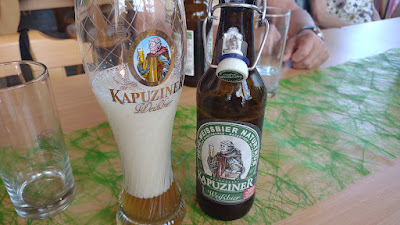







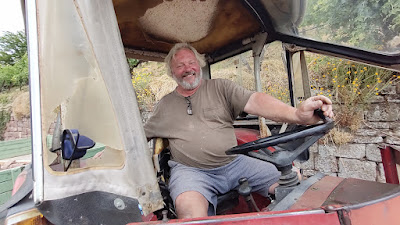




































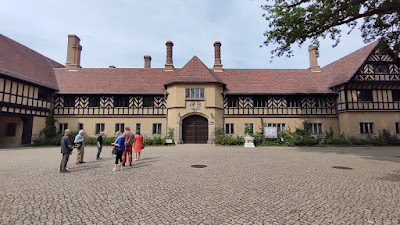
















































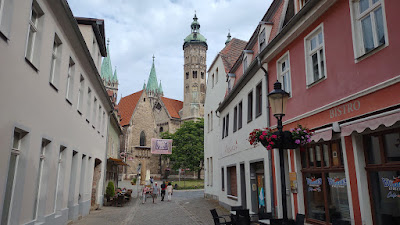

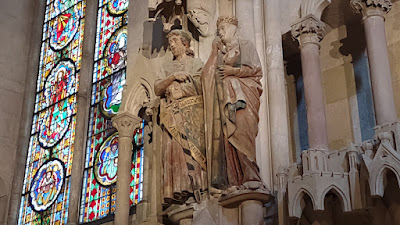


































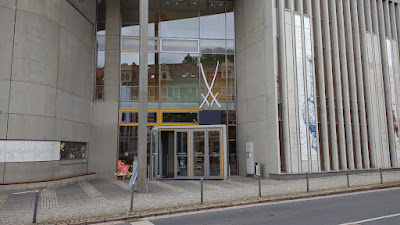












































































































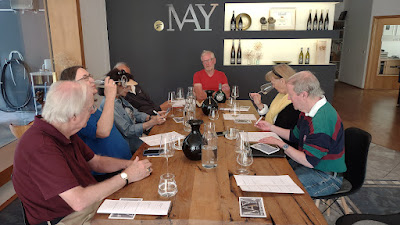

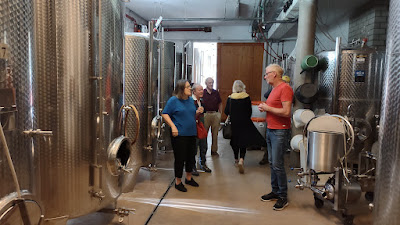





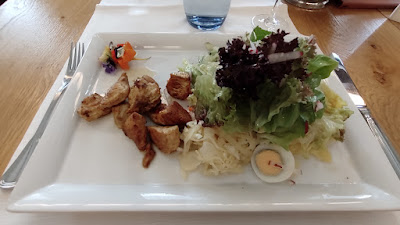













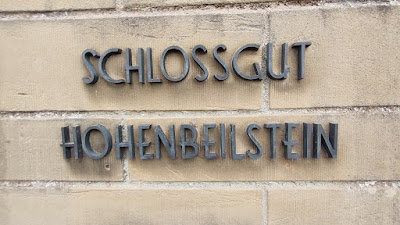

















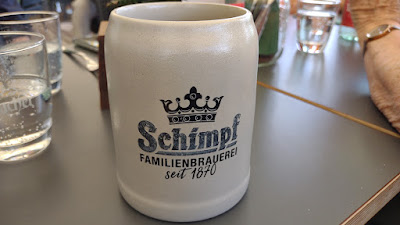




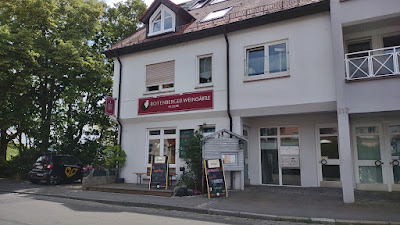





























No comments:
Post a Comment